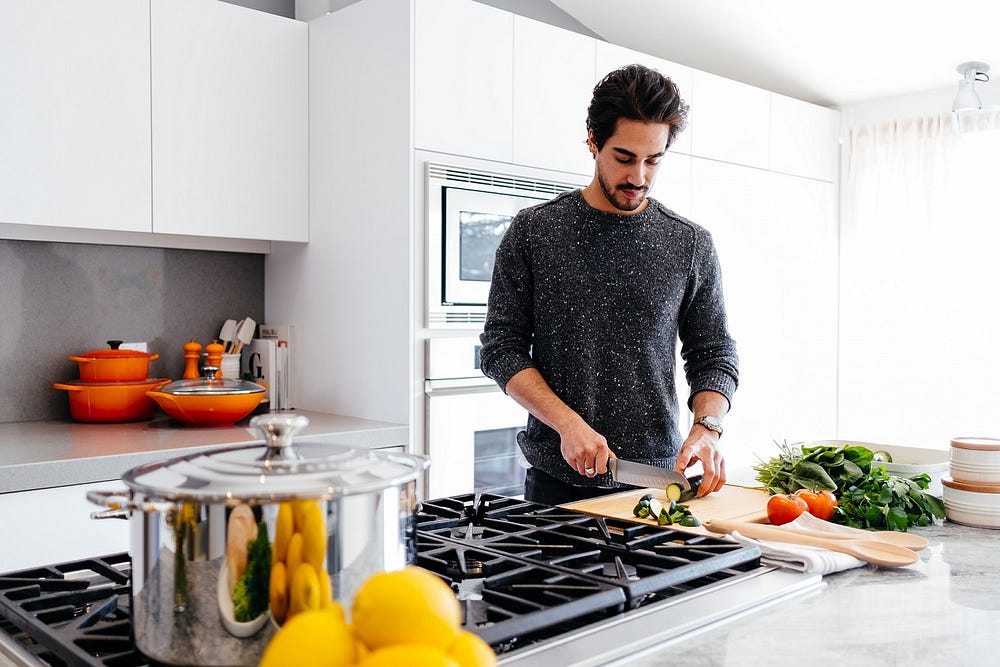Our relationship with food takes many forms — from a mere source of alleviating hunger to one of immense joy and appreciation. There are moments it can make us vulnerable and indulge us in boundless pleasure. And sometimes, it even becomes part of our identity and an undeniable source of human connection.
But now, the pandemic is changing our relationship with food, says research. With lockdowns, travel restrictions, and newly emerged concerns for our health, we’ve certainly spent more time pondering what and how we eat. But according to studies, COVID-19’s impact extends far beyond that. And these new dietary habits signal how far our interactions with food are intertwined with social and economic events.
#quarantinebaking has become a thing
When the pandemic first emerged, hand sanitizers and toilet paper quickly disappeared from supermarket shelves. Then hit the buying frenzy of flour. Sales of flour products reached new highs so much so that the popular US flour brand King Arthur saw its sales spike by a staggering 2000% in one month. In the UK, baking goods became the fastest-growing category with a 49.3% jump.
But this demand for flour and other baking ingredients wasn’t just driven by a fear of supply shortages. For people going through an unusual amount of stress, baking has provided an outlet to let off steam. It has given them hope and a sense of purpose and created a much-needed distraction in times of uncertainty.


And experts assert that baking could have surprising therapeutic effects, serving as an excellent source of relaxation and overall mental wellbeing. So, it doesn’t come as a surprise that #quarantinebaking and #stressbaking has seen a dramatic spike during the pandemic.
From “Purchasing” to “Growing”
According to Agri-Foods Analytics Lab, more than 50% of Canadians are now growing at least one fruit or vegetable. But for one in five of them, it’s the first time they’ve tried gardening. And this trend was seen across nations. Google searches for “how to grow vegetables” hit record highs in 2020, and 86% of these homeowners intend to continue gardening in 2021 as well.
The undeniable appeal of growing your own food lies not just in its essential role in the event of a food shortage, although that’s likely what first spurred the amateur gardeners. But gardening lends itself to creating a sense of optimism and relieving stress. And of course, growing your own food is an important step towards health-conscious eating too. It’s the best way to ensure toxin free meals that are fresh and tastier than store-bought food.
From “eating out” to “eating in”

With the lockdowns and health worries forcing people indoors, more people have now taken to eating in. Studies show that 54% of people are cooking more than they did during pre-pandemic times.
And it has given them much to explore. According to these new home chefs, 44% have discovered new ingredients and 50% have found new brands and products during the lockdowns.
And nearly one-third of adults scoured the internet in search of recipes and meal prep ideas, with recipes for sourdough bread topping the list. Even online searches for kitchen gadgets and equipment are on the rise. Coffee makers, for example, have reached an all-time high, growing by 33%. But this increased frequency of cooking is not without challenges. Some of their most pressing concerns include risk exposure during grocery shopping, planning different meals each day, and lacking the necessary cooking skills.
So, some people are seeking comfort in food delivery services like DoorDash and Uber Eats. While many much-loved local restaurants permanently closed their doors, food delivery apps have more than doubled with the pandemic. And with increased eating-in habits, ghost kitchens have also thrived, drawing in massive investments.
Unhealthy demand for sugar and buzz

Not all consumption trends point towards healthy habits. During COVID-19, grocery stores saw a 17% and 21% rise in candy and chocolate sales, respectively. And between April and June 2020, Unilever, which owns Ben & Jerry’s, reported a 26% increase in its ice cream eaten at home. Consumers are also seeking more indulgence while remaining housebound. This is driving ice cream bands to invest in adventurous varieties, from birthday cake-flavored ice cream to alcohol-based ones.
People also took to drinking more alcohol during the health crisis. Among non-binge drinkers, 28% reported drinking more. And the estimated online alcohol sales grew by over 80% in the US in 2020.
So, what’s driving these consumption decisions? Stress, anxiety, boredom, and tiredness rank as the most common reasons for unhealthy eating during the pandemic. It seems that people are seeking comfort in sugar and buzz.
A new kind of relationship
“Food is a source of pleasure, connection, and nourishment,” Dietician Kimmie Singh.
Our emotional and behavioral responses to external events are directly tied to how and what we eat. Evidently, COVID-19 has sent us in search of comfort, support, hope, and purpose in food. So, with the pandemic likely to play center stage in our lives for a while longer, these dietary habits will also continue well into the future. So, let’s make this an opportunity to reset our relationship with food—to shed off some of the bad habits and adopt a few good ones.


